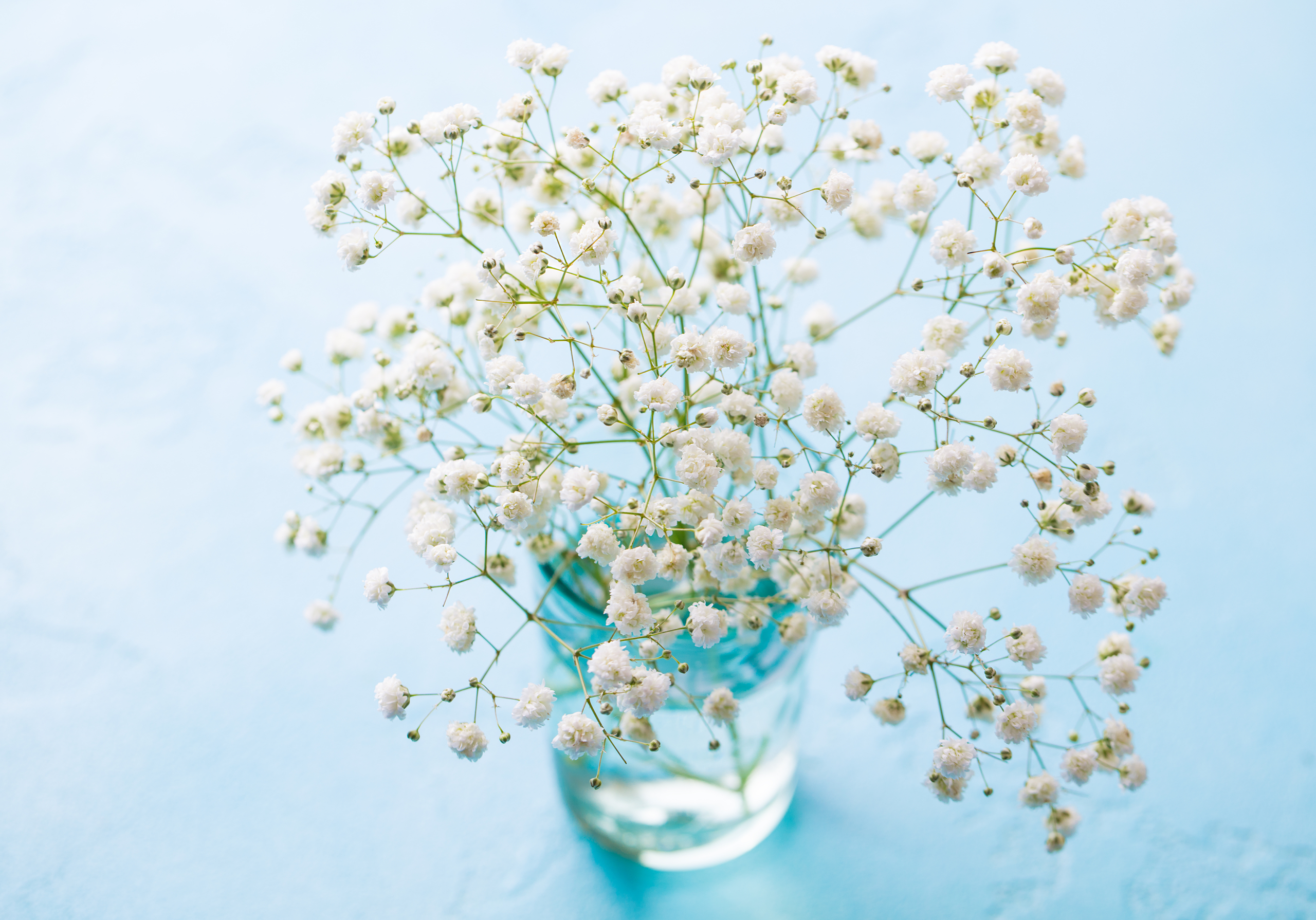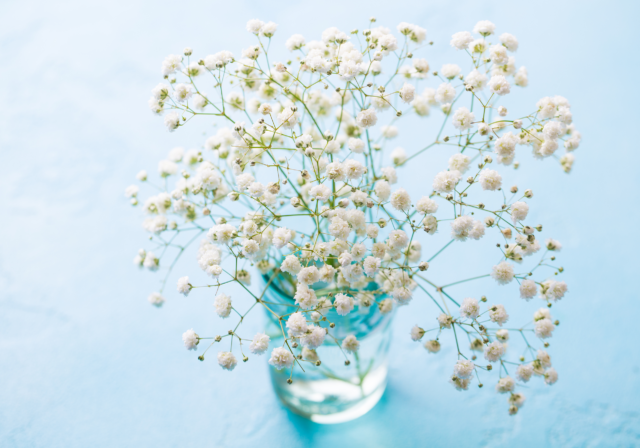Gypsophila or Gyp, commonly known as Baby's Breath, is a staple item in most coolers year-round. There are many varieties of Gypsophila available in the market today. Some have whiter florets than others or lighter stems for example. Certain varieties of gyp form tighter clusters of florets versus others that may have more laterals per stem. No matter what variety you choose, Gypsophila is usually rather hardy if you follow a few simple care and handling guidelines.
Problems & Solutions
Problem:
Ethylene Sensitive
Solution:
Ethylene damage can cause browning and/or shriveling of florets. Be sure your Gyp is STS treated and shipped with EthylBloc™.
Problem:
Botrytis/Mold/Pathogens Sensitive
Solution:
Botrytis mitigation in field, humidity and temp control, and potential Postharvest Anti-Botrytis treatments (after harvest and during shipping).
Problem:
Dries out quickly
Solution:
Insure proper packing. Also, Gyp is a thirsty crop, good water and the use of FloraLife® 200/300 is recommended. Gyp needs plenty of time to hydrate, a minimum of 4 hours.
Problem:
Browning Florets.
Solution:
Maintaining the cold chain throughout distribution is key. And use anti-ethylene treatments. Gyp can generate a lot of heat with high levels of respiration. Be sure your packaging is ventilated, and boxes are not over packed for good airflow. Storage temperature should be 34° - 38°F / 1° - 3°.
Problem:
Unopen florets.
Solution:
Respect proper cut stage protocols and pulse with sugar after harvest up to desired % of open flowers.
Need to Know: Gypsophila Helpful Hints
Properly Mixed Flower Food: The Benefits
-
- Increases the number of opening buds or florets
- Continues "popping"; closed buds continue to open
- Longer vase life
- Better color
Pack with Care
-
- Gyp stems have a soft texture and can break if bound or tied too tight.
- This crop packed in bulk boxes generates heat. Pre-cooling and maintaining the cold chain are essential for quality assurance.
- Be cautious of packing density in bulk boxes, gyp needs airflow and florets can be delicate and shatter if forced into the box.
- Use well ventilated packaging, macro perforated sleeves allow you to take advantage of pre-cooling and proper cooler temperatures to keep condensation from forming.
- Align yourself with suppliers who respect the cold chain and have a pre-cooling operation built into their care and handling protocols.
Performance
-
- Opening speed varies based on Gyp variety and cut stage.
- Expected vase life is typically 7-10 days for end consumer.
- Gyp can be mixed with other flowers in a vase or bucket without harmful effects. Keep an eye on flower food solution to be sure flowers stay hydrated.
- Cut stage is an important factor to consider in expected performance, ideally you will have 50% of the florets open when creating your designs, the other 50% to develop and open in the consumer's home.
- If using in floral foam design, use a lower density foam as young stems are soft and can break when trying to insert.
FIFO
-
- FIFO (First In First Out) inventory rotation is the rule when it comes to Gypsohila. Age is a prominent cause of browning florets.
Have questions or need expert advice? Visit FloraLife.com or contact your local representative for an in-person consultation.
Product availability depends upon geographical region. Check here for more information.


